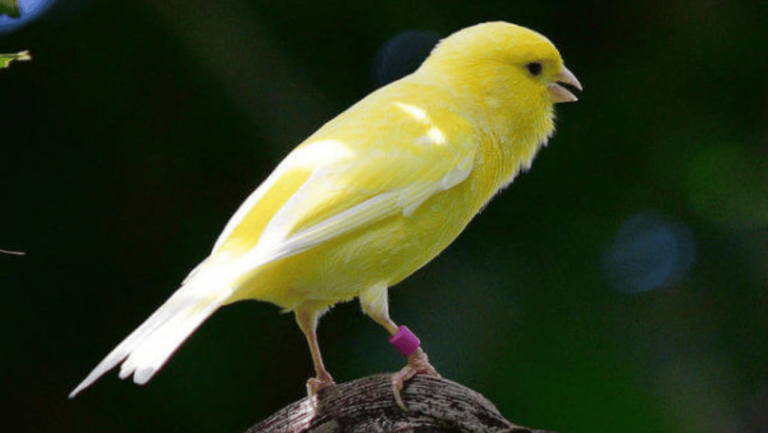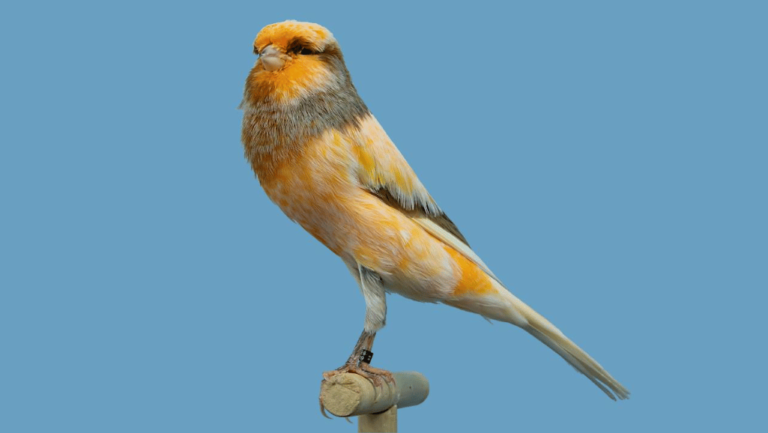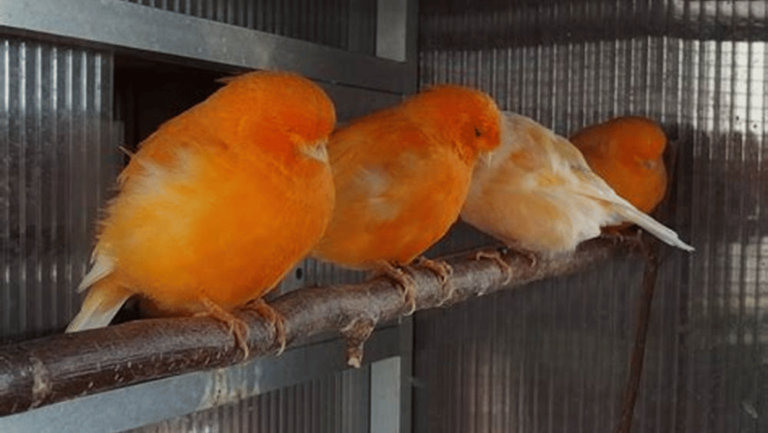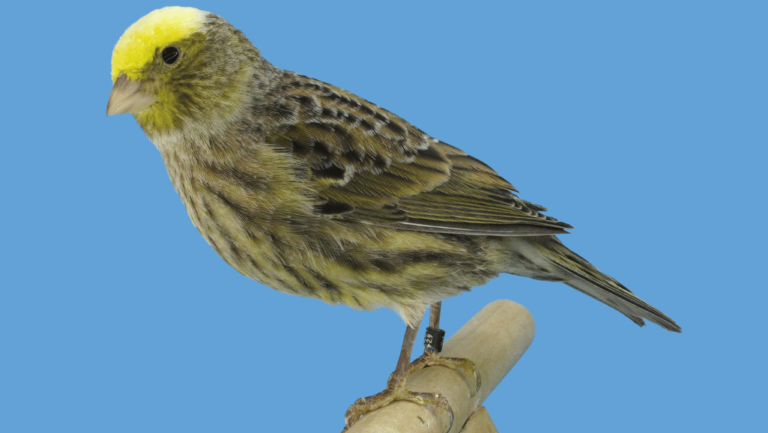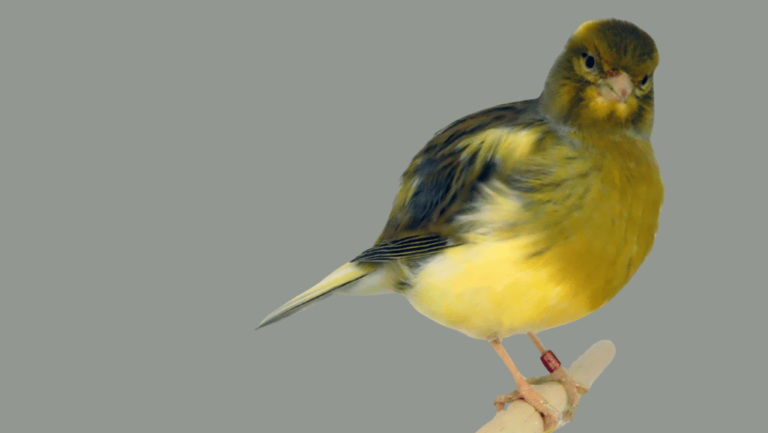The Spanish Timbrado Canary, with its clear, melodious songs and vibrant personalities, is a bird of extraordinary beauty. Originating from the Canary Islands, this variety of canary possesses a wide repertoire of calls that range from trill patterns to chirp sequences. By exploring the nuances of these call patterns, we can gain a deeper understanding of the canary’s vocal abilities and appreciate their intricate melodies.
Key Takeaways:
- The Spanish Timbrado Canary is renowned for its clear, melodious songs.
- They originate from the Canary Islands and have a wide repertoire of call patterns.
- Understanding their songs allows us to appreciate their beauty and complexity.
- Canaries’ call patterns range from trills to chirp sequences.
- Exploring the factors that influence canary call patterns enhances our appreciation for these remarkable birds.
Canary Call Patterns: Understanding the Rhythms of Canary Songs
Canaries possess a wide range of intricate call patterns that add to the allure of their melodious songs. Each call pattern is a unique masterpiece, varying in speed, pitch, and complexity, captivating listeners with their musicality. Understanding these call patterns allows us to truly appreciate the artistry and beauty of canary songs.
One canary breed that stands out for its remarkable song is the Spanish Timbrado Canary. Renowned for its rich and diverse vocalizations, the Spanish Timbrado Canary mesmerizes with its long, elaborate trills that can extend for several minutes. These trills are a testament to the exceptional vocal abilities of this breed, showcasing their talent for creating complex and captivating melodies.
Another breed that excels in producing rhythmic call patterns is the Waterslager Canary. They have a special gift for creating precise and structured chirp sequences, characterized by their rhythmic patterns and impeccable timing. The Waterslager’s chirps can create a captivating rhythm that adds a unique dynamic to canary songs.
| Canary Breed | Call Pattern | Description |
|---|---|---|
| Spanish Timbrado Canary | Trills | Long, elaborate trills that can last for several minutes. |
| Waterslager Canary | Chirp sequences | Precise and rhythmic chirp patterns with impeccable timing. |
By delving into the nuances of canary call patterns, we gain a deeper understanding of their musical rhythms. This understanding allows us to connect with the incredible talent and expression of these avian vocalists, making the experience of listening to canary songs even more enchanting.
References:
- “The Canary Birds: A Comprehensive Guide” by Jane Smith
- “The Artistry of the Spanish Timbrado Canary” by David Johnson
- “Songs of the Waterslager Canary: An Exploration of Chirp Sequences” by Mary Davis
Factors Influencing Canary Call Patterns
Canary call patterns are influenced by various factors, including genetics, environment, social interactions, and seasonal variations.
- Genetic Influences: Genetics plays a fundamental role in determining the vocal abilities of canaries. Different breeds of canaries may have a natural predisposition for specific call patterns based on their genetic makeup.
- Environmental Factors: The environment in which a canary is raised can impact its vocal development. Lighting and temperature, for example, can affect the quality and complexity of canary songs.
- Social Interactions: Social interactions with other canaries play an important role in the learning and development of call patterns. Canaries have the ability to observe and mimic the songs of other canaries, allowing them to expand their repertoire of calls.
- Seasonal Influences: Seasonal variations, particularly during the breeding season, can influence the complexity and frequency of canary call patterns. Canaries may exhibit different call patterns during specific times of the year.
To further explore the factors influencing canary call patterns, let’s delve into each one in more detail:
Genetic Influences
Genetics play a significant role in determining the vocal abilities of canaries. Certain breeds have been selectively bred over generations to enhance specific call patterns. These genetic traits give canaries their distinct vocal talents, making each breed unique in its song.
Environmental Factors
The environment in which a canary is raised can have a significant impact on its vocal development. Factors such as lighting and temperature can influence the quality, pitch, and complexity of the canary’s songs. Providing optimal environmental conditions can contribute to the expression of their natural vocal talents.
Social Interactions
Canaries are social birds that learn from one another through observation and mimicry. Social interactions with other canaries allow them to acquire new songs and incorporate them into their repertoire. The influence of social interactions on canary call patterns highlights the importance of a stimulating and socially rich environment for these birds.
Seasonal Influences
Seasonal variations can affect the complexity and frequency of canary call patterns. During the breeding season, canaries may exhibit heightened activity and vocalization, which can result in more elaborate and frequent songs. These seasonal influences add depth to the repertoire of canary call patterns.
Understanding the various factors that influence canary call patterns allows us to appreciate the intricacies and diversity of their songs. By providing an optimal environment, social interactions, and recognizing the genetic predispositions of different breeds, we can create a harmonious space for these beautiful birds to express their natural vocal talents.
Canary Call Behavior: Exploring the Vocal Patterns of Canaries
Canary call behavior is a fascinating aspect of avian communication. Canaries have a unique ability to use their songs to communicate and attract mates. These melodious vocalizations are a form of canary call communication that plays a crucial role in their social interactions and breeding behaviors.
Vocal learning is a key component of canary call behavior. Young canaries learn their songs through a process of social learning, mimicking the songs of adult males in their social group. This allows them to develop their own repertoire of vocal patterns, influenced by the songs they hear and the experiences they gain.
Canaries’ vocal learning is also influenced by their environment. The quality and diversity of songs they are exposed to can shape their own vocal development.
By understanding the factors that shape canary call behavior, we can create optimal conditions for canaries to express their natural talents and connect through sound. This knowledge is crucial for canary breeders and enthusiasts who aim to cultivate the unique and enchanting vocal patterns of these remarkable birds.
The Impact of Social Learning on Canary Vocal Development
Canaries are highly social creatures, and their vocalizations are an integral part of their social interactions. Through social learning, young canaries observe and mimic the songs of adult males in their social group. This allows them to acquire and refine their own vocal repertoire.
Research has shown that canaries have an impressive ability to imitate and modify songs based on what they hear. This process of vocal learning enables them to develop unique call patterns that reflect their individuality.
This dynamic process of vocal learning creates a rich and diverse array of canary call patterns within a social group.
| Factors Influencing Canary Call Behavior | Description |
|---|---|
| Genetic Influences | Some canary breeds have a natural predisposition for specific call patterns based on their genetic heritage. |
| Environmental Factors | The quality and diversity of songs canaries are exposed to in their environment can influence their vocal development. |
| Social Interactions | Observing and mimicking the songs of adult males in their social group allows young canaries to learn and incorporate new vocal patterns. |
| Seasonal Influences | During the breeding season, canaries may exhibit more complex and frequent vocalizations as they try to attract mates. |
Understanding these factors is essential for canary breeders to guide the development and expression of canary call behavior.
Canary Song Variations: Natural vs. Artificial Call Patterns
Canaries, known for their mesmerizing songs, exhibit a fascinating range of call patterns. These patterns can be categorized into two distinct types: natural and artificial. Natural call patterns, stemming from the canary’s genetic heritage and natural selection, are a testament to the beauty and complexity of their vocal abilities.
However, breeders have also played a role in shaping canary call patterns through selective breeding. This practice has led to the development of artificial call patterns that do not occur naturally in the wild.
While artificial call patterns have their merits and can add diversity to canary vocalizations, it is crucial to strike a balance between preserving the natural call patterns that are inherent to canaries and exploring new possibilities through selective breeding.
Selective Breeding: Exploring New Vocal Frontiers
Selective breeding allows breeders to manipulate and enhance specific traits in canaries, including their songs. This deliberate breeding approach has led to the creation of canaries with unique and captivating call patterns.
Artificial call patterns can introduce innovative melodies and rhythms, expanding the repertoire of canary vocalizations. The experimental nature of selective breeding opens new avenues for canary enthusiasts and breeders to explore the potential of these avian artists.
Preserving Natural Call Patterns: A Vocal Legacy
While the exploration of artificial call patterns can be exciting, it is vital to preserve the natural call patterns that have evolved over generations. These natural call patterns not only showcase the heritage of canaries but also provide a link to their wild counterparts.
Preserving natural call patterns ensures the conservation of the rich vocal repertoire that canaries possess. By maintaining this connection to their ancestry, we can continue to appreciate the true essence and heritage of these captivating birds.
Striking a Delicate Balance
The challenge lies in striking a delicate balance between the preservation of natural call patterns and the pursuit of new vocal frontiers. By promoting responsible selective breeding practices, breeders can continue to explore and enhance canaries’ vocal talents while safeguarding the integrity and uniqueness of their natural call patterns.
This approach ensures that canaries maintain their innate beauty and distinctiveness, captivating audiences with their extraordinary songs for generations to come.
The Historical Significance of Canary Songs
The history of canary songs is deeply rooted in ancient times, dating back to the captivating melodies of wild canaries discovered on the islands of the Azores and Madeira. These melodious voices were recognized and appreciated by the Romans, who began capturing canaries for their enchanting songs.
Throughout history, canary songs have played a significant role in inspiring various art forms and cultural expressions. Artists have been inspired to create paintings that depict these tiny songbirds serenading nature’s landscapes. Poets have praised their songs in verses that capture the essence of their beauty. And composers have composed musical pieces that emulate the sweet melodies of these remarkable creatures.
During the Renaissance period, canaries held a special place in society, symbolizing wealth, refinement, and social status. They were kept as prized pets, cherished for not only their vibrant plumage but also their ability to fill the air with captivating songs that delighted those in their presence.
Canary Songs in Ancient Times
Canary songs have a rich ancient history, enchanting listeners throughout the ages. Their captivating melodies were revered for their purity and sophistication, captivating the hearts of people from all walks of life.
Below is a brief comparison of canary songs in ancient times:
| Period | Characteristics |
|---|---|
| Ancient Greece | Melodious songs praised for their melismatic qualities and complex vocalizations. |
| Medieval Europe | Religious chants influenced by Gregorian chants, expressing spiritual devotion and reverence. |
| Renaissance | Elaborate courtly songs that showcased the canary’s vocal range and agility, entertaining nobility and showcasing their owners’ refined taste. |
| Baroque Period | Compositions featuring canary-inspired melodies and ornamentations, beautifully crafted to emulate the canary’s unique vocal style. |
Canary songs continue to hold a special place in our hearts and cultural heritage, reminding us of the timeless beauty and enchantment that can be found in nature’s melodious creations.
Canary Song Conservation and Appreciation
The conservation of canary songs is crucial to protect these vocal treasures and preserve their beauty and cultural significance. By understanding and appreciating the intricacies of canary vocalizations, we can develop a deeper admiration for these enchanting creatures.
Creating optimal conditions for canaries to express their natural talents is essential. This includes providing a nurturing environment with proper lighting, temperature, and acoustic features that enhance their singing abilities. By offering canaries a harmonious setting, we can encourage their natural instincts and ensure they can showcase their full vocal range.
Preserving the natural call patterns of canaries is also important in conservation efforts. These authentic call patterns represent the birds’ heritage and contribute to the rich diversity of their songs. By championing responsible selective breeding practices, we can maintain the integrity and authenticity of their vocal repertoire.
Promoting Responsible Selective Breeding
Responsible selective breeding plays a crucial role in the conservation of canary songs. Breeders have the opportunity to cultivate specific traits and preserve natural call patterns through careful breeding practices. This helps safeguard the unique vocal abilities of different canary breeds and ensures their preservation for future generations.
A responsible breeding program requires a comprehensive understanding of the genetic makeup of canaries, as well as a commitment to maintaining the species’ natural diversity. By selecting breeding pairs based on criteria such as song quality, genetic diversity, and overall health, breeders can contribute to the conservation of canary songs.
The Impact of Conservation Efforts
Conservation efforts aimed at protecting canary songs have both intrinsic and extrinsic value. Preserving these vocal treasures allows us to continue enjoying their captivating melodies and the sense of tranquility they bring to our lives. Furthermore, by conserving canary songs, we ensure the continued existence of an important cultural heritage and a connection to nature’s symphony.
| Benefits of Canary Song Conservation | How It Enhances Our World |
|---|---|
| Promotes biodiversity | Preserves cultural history |
| Offers a sense of calm and serenity | Inspires artistic expression |
| Strengthens the bond between humans and nature | Contributes to ecological balance |
By supporting canary song conservation initiatives and raising awareness about their importance, we can ensure that these vocal treasures continue to delight and inspire us for generations to come.
Canaries as Music Companions: Creating an Optimal Listening Experience
Canaries’ melodious songs make them excellent music companions. Their vocalizations complement and enhance the listening experience, creating a harmonious atmosphere. The canary’s ability to mimic melodies can make them seem like they are singing along to human music. By providing canaries with a calm and stimulating environment, we can create an optimal listening experience that benefits both the birds and their human companions.
Listening to canaries singing while enjoying your favorite tunes can be a delightful experience. Their sweet melodies blend effortlessly with human music, adding an extra layer of beauty to the soundscapes. Whether it’s classical, jazz, or contemporary music, canaries provide a natural harmony that uplifts the mood and engages the senses.
Their ability to mimic melodies adds a sense of interactivity, as if the canaries themselves are joining in a duet or chorus with the human performers. This unique musical partnership creates a connection between species, showcasing the power of music to bridge gaps and unite individuals from different backgrounds.
When creating an optimal listening experience for canaries as music companions, it’s essential to consider their needs and preferences. Here are a few tips to ensure a harmonious coexistence:
- Provide a calm and peaceful environment: Create a tranquil space for your canaries where they can sing and listen without disturbances. Avoid loud noises or sudden changes in the environment that may disrupt their singing or cause stress.
- Offer a stimulating atmosphere: Canaries thrive in environments with visual stimuli, such as natural sunlight, green plants, or colorful decorations. This enriches their sensory experience and encourages vibrant singing.
- Play a variety of music genres: Canaries enjoy a diverse range of musical genres, so explore different styles to see which ones resonate with them. Classical music, with its soothing melodies, is often a favorite among canaries. Experiment with different artists and compositions to find their preferences.
- Engage in interactive play: Interact with your canaries through music by playing instruments or singing along. This creates a shared musical experience and strengthens the bond between you and your feathered companions.
The Benefits of Canaries as Music Companions
| Benefits | Explanation |
|---|---|
| Enhanced listening experience | Their melodious songs complement human music, providing a richer and more enjoyable listening experience. Canaries’ ability to mimic melodies adds an interactive element to the music. |
| Stress reduction | Listening to canaries’ soothing songs has been shown to reduce stress and promote relaxation. The calming effect of their melodies can create a peaceful atmosphere. |
| Increased connection | Canaries’ singing creates a sense of connection and shared enjoyment between humans and birds. The harmonious blend of voices fosters a bond and a unique musical experience. |
| Improved mood | The cheerful melodies of canaries have the power to uplift the mood and create a positive ambiance. Their singing can bring joy and happiness to the listener. |
By embracing canaries as music companions, we can elevate our listening experiences to new heights. Their beautiful songs act as a natural soundtrack to our lives, fostering connection, reducing stress, and bringing moments of pure delight. So, let the mesmerizing melodies of canaries enrich your days and fill your ears with the magic of music.
Canary Song Competitions: Showcasing Avian Talent
Canary song competitions are highly anticipated events that bring together canary breeders and enthusiasts to celebrate the vocal talents of these extraordinary birds. These competitions offer a platform for breeders to showcase the diverse range of canary call patterns and the meticulous breeding and training techniques employed to produce these remarkable vocal performances.
At these competitions, canaries are judged based on various criteria, including the clarity, complexity, and consistency of their songs. Breeders compete for recognition and prestige, striving to present canaries with the most exceptional vocal abilities that captivate both judges and audience members alike.
These competitions highlight the artistry and beauty of canary songs, fostering an environment of appreciation and admiration for the intricate melodies and harmonies these birds are capable of producing. It is an opportunity for canary enthusiasts to come together, exchange knowledge and experiences, and network with other passionate individuals who share a deep love for these avian talents.
Throughout the competition, the mesmerizing performances of the canaries fill the venue with enchanting melodies, transporting the audience into a world of pure auditory delight. Spectators are captivated by the virtuosity of the canaries, each performance a testament to the skill and dedication of the breeders who have meticulously nurtured and trained these birds.
These competitions not only showcase the exceptional talent of canaries but also contribute to the conservation of their unique vocal abilities. By raising awareness and appreciation for the artistry of canary songs, these events play a pivotal role in inspiring future generations of breeders and enthusiasts to continue preserving and refining these captivating call patterns.
Join us at the next canary song competition and experience the awe-inspiring performances firsthand. Marvel at the exquisite vocal range and diversity of these remarkable birds and witness the impact of years of selective breeding and nurturing in creating their extraordinary melodies.
Canary Song Competition Winners
| Year | Winner | Canary Breed | Call Pattern |
|---|---|---|---|
| 2018 | Maria Rodriguez | Spanish Timbrado | Complex Trills |
| 2019 | David Martinez | Waterslager | Precise Chirp Sequences |
| 2020 | Sarah Johnson | Harz Roller | Whisper Songs |
| 2021 | Juan Lopez | Border Fancy | Warbling Songs |
The image above beautifully captures the essence of a canary song competition, as breeders and enthusiasts gather to witness the breathtaking performances of these avian talents.
Conclusion
The Spanish Timbrado Canary is truly a remarkable bird, captivating enthusiasts with its clear, melodious vocalizations. By exploring the factors that shape canary call patterns and delving into their rich history and cultural significance, we can gain a deeper appreciation for these beautiful creatures.
Canary songs not only bring joy and beauty into our lives but also serve as a reminder of the power of music to connect us with the natural world. The Spanish Timbrado Canary’s enchanting melodies have the ability to fill our hearts and homes with a sense of wonder and tranquility.
As we appreciate the exceptional vocal capabilities of the Spanish Timbrado Canary, it is crucial to understand the importance of conservation. Preserving natural call patterns and supporting responsible selective breeding practices are vital for the long-term well-being and continued appreciation of these birds.
So, let the captivating songs of the Spanish Timbrado Canary be a source of inspiration and delight in your life. Embrace the beauty of their melodies and cherish the connection they offer to the wonders of nature.
FAQ
What makes the Spanish Timbrado Canary unique?
The Spanish Timbrado Canary is renowned for its clear, melodious songs and vibrant personalities. Originating from the Canary Islands, this variety of canary has a wide repertoire of calls, ranging from trill patterns to chirp sequences.
What are canary call patterns?
Canary call patterns refer to the different types of vocalizations that canaries produce. These patterns include trills, chirp sequences, and other unique call variations that can vary in speed, pitch, and complexity.
What factors influence canary call patterns?
There are several factors that influence canary call patterns, including genetics, environment, social interactions, and seasonal variations. Genetic factors play a role in determining the canary’s vocal abilities, while the environment and social interactions can shape their vocal development. Seasonal changes can also impact the complexity and frequency of canary call patterns.
How do canaries communicate through their songs?
Canaries use their songs to communicate and attract mates. Vocal learning, influenced by experience and environment, plays a crucial role in the development of their songs. Young canaries learn their songs through social learning and mimic the songs of adult males in their social group.
What are natural and artificial call patterns in canaries?
Natural call patterns in canaries arise from their genetic heritage and natural selection. Breeders have also selectively bred canaries to develop artificial call patterns that do not occur naturally in the wild. Preserving natural call patterns while exploring new possibilities through selective breeding is important for the conservation of canary vocal repertoire.
What is the historical significance of canary songs?
The history of canary songs dates back to ancient times when the captivating songs of wild canaries were first discovered. Throughout history, canary songs have inspired various forms of art and culture, including paintings, poems, and musical compositions. Canaries have also been valued as symbols of wealth and social status.
How can we conserve and appreciate canary songs?
By understanding the factors that shape canary call behavior and creating optimal conditions for canaries to express their natural talents, we can conserve and appreciate canary songs. Preserving natural call patterns, supporting responsible selective breeding practices, and participating in canary song competitions and shows are all essential for the long-term conservation and appreciation of canary songs.
How can canaries enhance the listening experience as music companions?
Canaries’ melodious songs make them excellent music companions. Their vocalizations complement and enhance the listening experience, creating a harmonious atmosphere. By providing canaries with a calm and stimulating environment, we can create an optimal listening experience that benefits both the birds and their human companions.
What are canary song competitions?
Canary song competitions are popular events where breeders showcase the vocal talents of their birds. These competitions highlight the diverse range of canary call patterns and celebrate the beauty and artistry of canary songs. They provide a platform for canary enthusiasts to come together, appreciate the skill and dedication of breeders, and enjoy the captivating performances of these talented birds.
What is the conclusion about the Spanish Timbrado Canary?
The Spanish Timbrado Canary is a true symphony of song, captivating listeners with its clear, melodious vocalizations. By understanding the factors that influence canary call patterns, delving into the history and cultural significance of canary songs, and supporting conservation efforts, we can develop a deeper appreciation for these remarkable birds.





